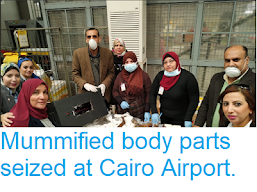An important archaeological site in eastern Sudan has been destroyed by looters armed with metal detectors and heavy machinery. The Jabal Maragha site, in the Bayunda Desert of northern Sudan, dates from the Merotic Period, between about 350 BC and 350 AD, has been excavated by Sudanese archaeologists since 1999, but when they arrived at the site for the beginning of this year's excavation season on 20 August, they discovered the site had been totally destroyed, and replaced by a hole in the ground 20 long and 17 m deep. Five men were found still working at the site, and were arrested by the archaeologist's police escort, but they were released after a few hours, since when both they and their equipment have vanished, leading to suspicions that they were in the employ of someone sufficiently powerful and well connected to effectively circumvent laws protecting archaeological sites in the Sudan.
Sudan's archaeological sites have suffered a sharp rise in looting events in recent years, which has widely been linked to the expansion of the gold industry. The country is now the third largest producer of gold in Africa, after South Africa and Ghana, and earns about US$1.2 billion per year from gold exports. Unfortunately, the distribution of wealth in Sudan is very uneven, with very high unemployment and many people still effectively reliant on subsistence farming. In lieu of any real plan to resolve this situation, local governments in many parts of the country have encouraged people to hunt for gold as a way of supplementing their income. Unfortunately, even in parts of the country with accessible gold reserves, artisanal gold mining generally results in a relatively low level of reward for a great deal of effort. This makes archaeological sites an attractive target, as gold here has been concentrated by the activities of ancient miners. The use of metal detectors has made this activity easier, as these enable looters to quickly locate large metal objects. However, many areas of Sudan have very iron-rich soils, which metal detectors cannot tell from gold, which can lead to miners digging large holes and finding little or no gold, something which is thought likely to have contributed to the size of the hole at Jabal Maragha.
The Merotic Period takes its name from the city of Meroë, which was the capitol of the Kingdom of Kush from about 590 BC until the fourth century AD. During this time Kush was an economically powerful nation with trading links reaching as far as India and possibly China, which occasionally fought against the Roman Empire, which occupied Egypt for much of the same time period. The economy of Meroë appears to have been driven largely by the export of iron, which was extensively mined in the area. The Merotic civilisation is often associated with that of Egypt, and much of its art shows Egyptian influences, but it was politically and culturally distinct, if less well understood today, making the loss of Merotic archaeological sites highly significant.
See also...



Follow Sciency Thoughts on Facebook.





